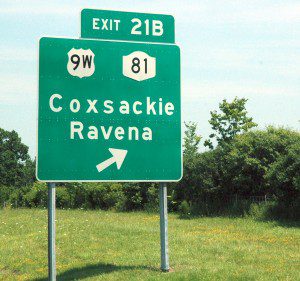|
|
|
Coxsackie NY and the Virus Named After Itby Vincent RacanielloMonday, August 10, 2009 at 09:10 AM EDT
In the summer of 1947 there were several small outbreaks of poliomyelitis in upstate New York. Gilbert Dalldorf, the director of the Wadsworth Laboratory in Albany, NY, and his associate Grace M. Sickles investigaged this outbreak. In particular they sought polioviruses that could replicate in mice. This search was motivated by the fact that research on poliovirus required the use of monkeys which were extremely expensive. Dalldorf had attended the Fourth International Congress for Microbiology in 1947 where he heard that very young mice – suckling mice – could readily be infected with Theiler’s virus. Dalldorf and Sickles made fecal suspensions from two children suspected of having poliomyelitis, and inoculated these into adult and suckling mice. Only the suckling mice (1 – 7 days old) developed paralysis; animals more than one week old were resistant to infection. The damage responsible for limb paralysis was widespread lesions in skeletal muscles, not in the central nervous system as occurs with poliovirus. Further study revealed that the viruses could be distinguished serologically from poliovirus. Not only had Dalldorf and Sickles identified the first members of a very large group of human viruses, but they also introduced and popularized a new and inexpensive animal into the virology laboratory – the suckling mouse. In 1949 Dalldorf suggested that the new viruses be called Coxsackie viruses, because the first recognized human cases were residents of that New York village. This unique name is of native North American origin. Over ten years later the importance of this work was recognized by Dr. Max Finland of Boston City Hospital:
In subsequent years many different Coxsackieviruses were isolated that cause a variety of clinical syndromes. Today at least 30 serotypes of Coxsackieviruses are classified in the enterovirus genus of the Picornaviridae. The viruses are classified into groups A or B depending upon the pathological effect in suckling mice. Not every locale is pleased to have a virus named after it. In May 1993, an outbreak of an unexplained pulmonary illness occurred in the southwestern United States, in an area shared by Arizona, New Mexico, Colorado and Utah called “The Four Corners.†Muerto Canyon was proposed as the name for the etiologic agent of the disease, because the virus was first isolated from a rodent near the canyon. However after residents objected, the name Sin nombre virus was given to the agent of hantavirus pulmonary syndrome. Dalldorf G, & Sickles GM (1948). An Unidentified, Filtrable Agent Isolated From the Feces of Children With Paralysis. Science (New York, N.Y.), 108 (2794), 61-62 PMID: 17777513 This article originally appeared on virology blog. |
|

